Network Topology : Introduction
- Topology means structure. Hence, study of structural arrangement of elements or devices of a network is called as network topology.
- It is also known as the layout of the network which depicts the geometric representation of all the links and linking device of any network.
- There are six major network topologies that can be used for designing any network depending upon the requirement.
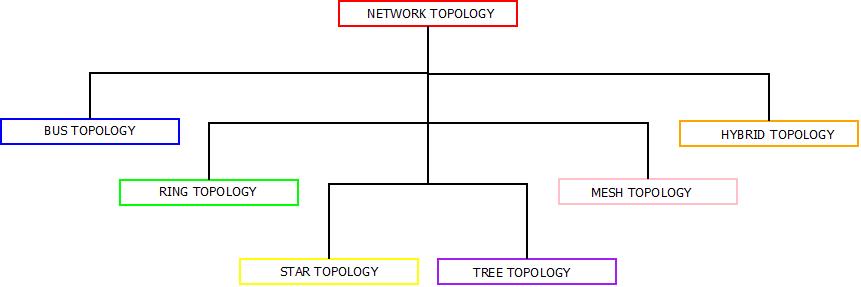
Network Topology : Categorization
1. Network Topology : Bus
- Bus topology is also called as a linear bus topology as it has the structure similar to as of bus. It means, all the devices(including nodes) are connected together thorough a single cable in linear fashion.
- Transmitters are used at the end of the linear cable as it is capable of absorbing noise and data packets. If we do not use transmitters, the cable will act as a mirror and a lot of noise will get generated. Below depicts the structure of a bus topology.
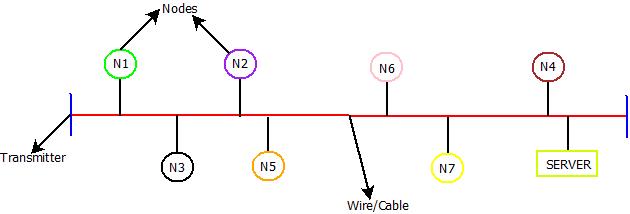
Network Topology : Bus Topology
Advantages : Bus Topology
- Less cables are required.
- Easy to install the setup.
- Can be used for personal purpose only.
Disadvantages : Bus Topology
- If there occurs a break in the cable, entire network will get shutdown.
- Difficult to find, where the break in cable has occurred.
- Expensive due to the cost of transmitters.
- We cannot use this topology in large building organizations.
2. Network Topology : Ring
- To overcome drawbacks of bus topology, concept of ring topology was introduced. In ring topology, the structure of the network is formed similar to as of a “Ring”. Nodes are connected in a circular manner to each other.
- Only unidirectional communication(Clockwise or Anticlockwise) can happen and not bidirectional. For example: If node N1 wants to send data packet to node N5, it has to pass through node N2, N3 and N4. This results in delay in message passing and privacy is also affected.
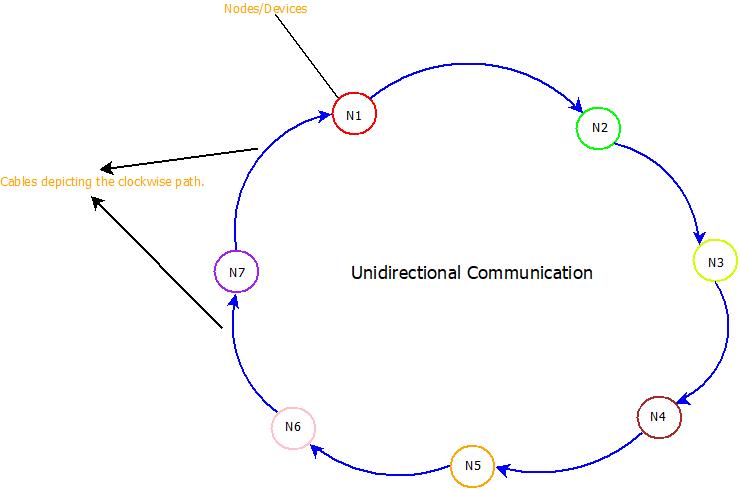
Network Topology : Ring Topology
Advantages : Ring Topology
- If there is a break in the cable, it does not affect the entire network.
- Problems can be easily identified.
- Devices/Nodes are easy to add or remove from the network.
Disadvantages : Ring Topology
- Delay in message passing due to the use of unidirectional concept.
- No security of data.
- Privacy of data is also hampered.
- Use of lot of cables increases the cost of entire network.
3. Network Topology : Star
- Start topology overcomes the drawbacks of ring topology. In this, all the nodes/devices are connected to a centralized device known as HUB in the structure similar to that of a “STAR”.
- It enables the devices to send message directly to their respective receivers.
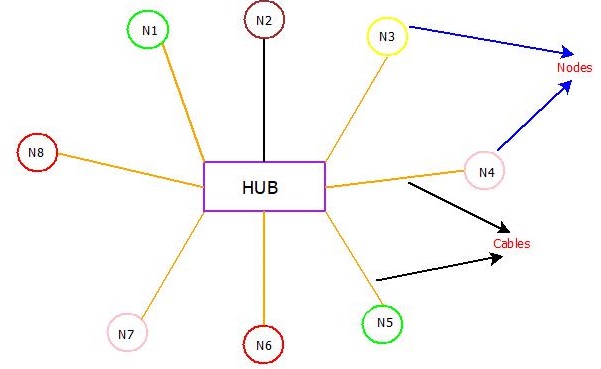
Network Topology : Star Topology
Advantages : Star Topology
- Easily add and/or remove devices.
- Problem identification is easy.
- Data communication is fast due to the HUB connectivity.
Disadvantages : Star Topology
- Expensive due to the cost of cables and HUB.
- If HUB fails(Due to high load), entire network will shut down.
4. Network Topology : Tree
- In tree topology, the whole structure relies on the “Backbone Cable(Optical Fiber)”. Tree topology is also known as expanding network topology.
- Each node is connected to a HUB just like in start topology and each HUB is connected to each other via the backbone cable just like the bus topology. Hence we can say that, Tree topology is the combination of Bus and Start topology which includes their respective advantages and disadvantages too.
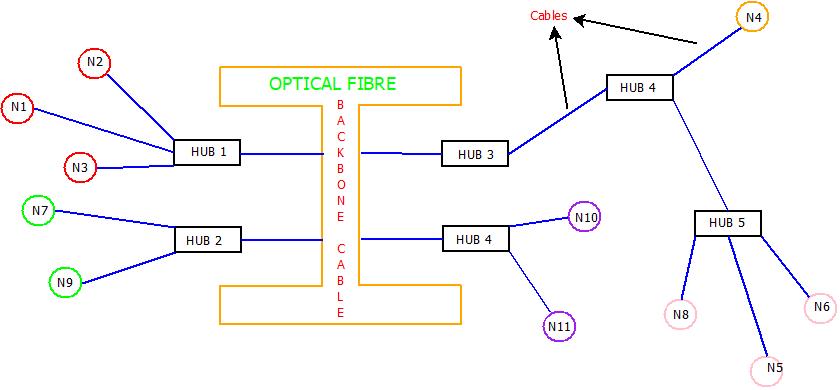
Network Topology : Tree Topology
Advantages : Tree Topology
- Point-to-Point network.
- Can be used in large building organizations because of its network expanding ability.
Disadvantages : Tree Topology
- Highly expensive.
- As tree topology depends upon the backbone cable, any fault in that will shutdown the entire network.
- Complex installation.
- Even more complex maintenance.
5. Network Topology : Mesh
- In Mesh Topology, each node provides an individual link to another node. It means, every node in the entire network is directly connected to every other node in the network making it the most complex topology among all the other topologies.
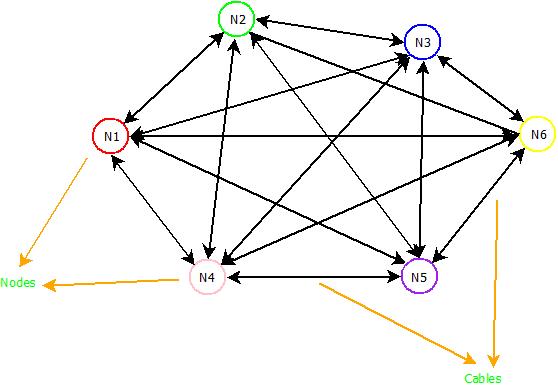
Network Topology : Mesh Topology
Advantages : Mesh Topology
- Reduction in traffic due to individual node.
- Data communication speed is fast.
- Security and privacy of data is provided.
- Any fault in the network doesn’t affect the entire network.
Disadvantages : Mesh Topology
- Most expensive topology due to the amount of cables and HUBs used.
- Highly complex structure.
7. Network Topology : Hybrid
- Hybrid topology is a custom topology. It is a combination of three or more standard topology including Bus, Ring & Star topology. Every new combination of anyone of these results in new topology every time.
- Hybrid Topology = Combination of( Bus + Star + Ring) Topology.
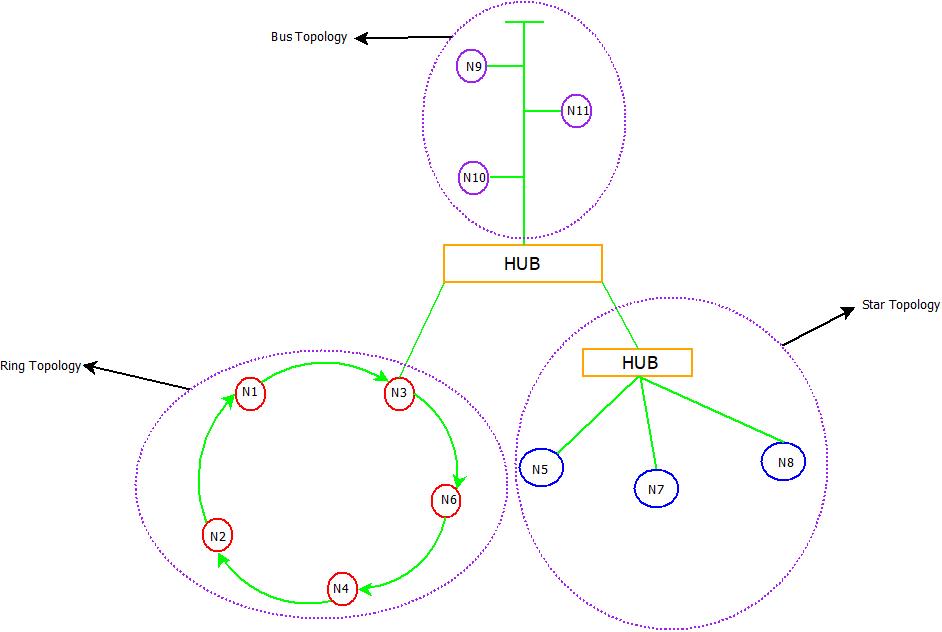
Network Topology : Hybrid Topology
Network Topology : Topology Comparison

Network Topology : Comparison